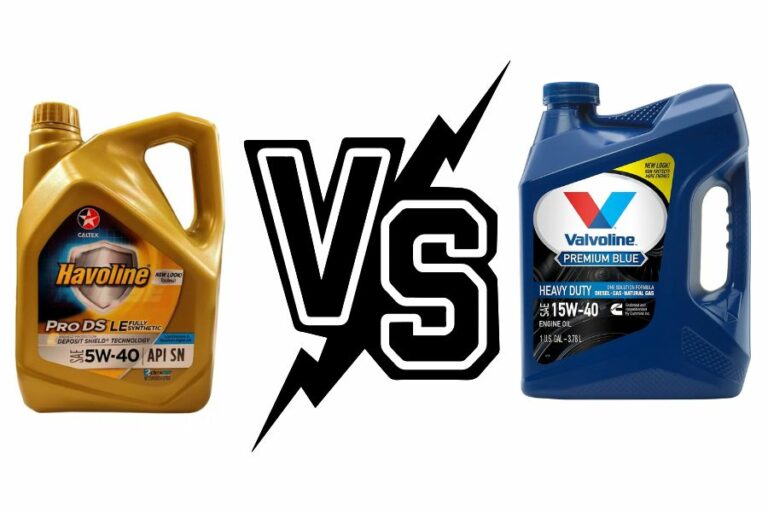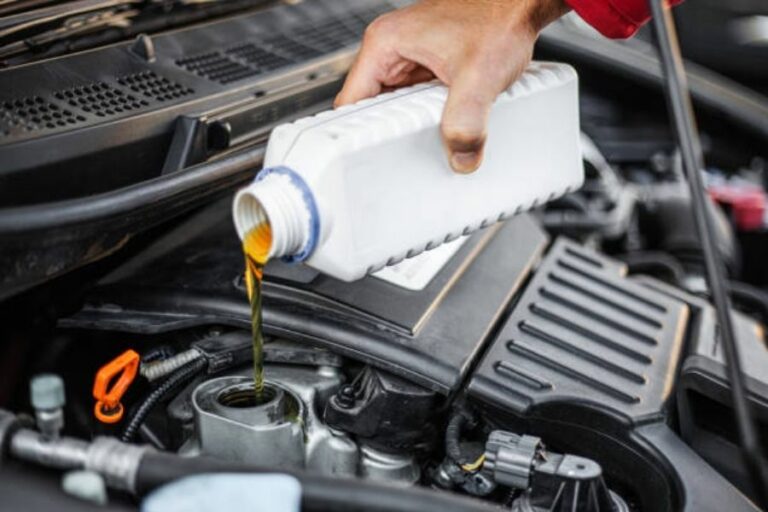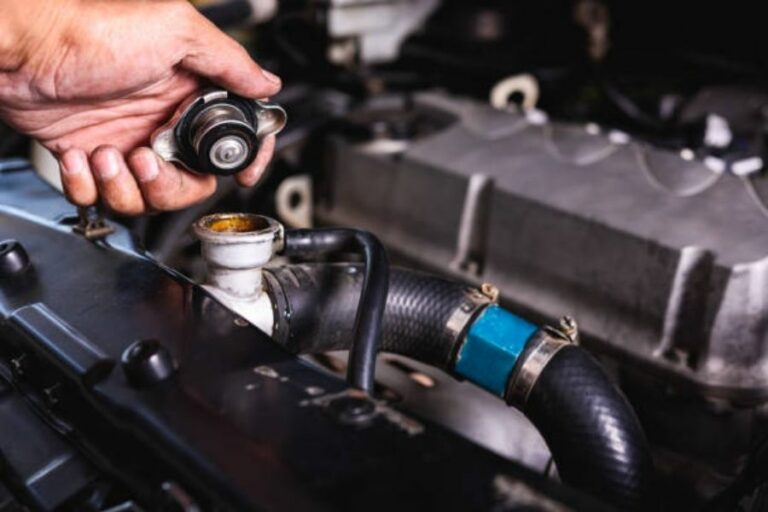How to Check Hydrostatic Transmission Fluid on a Cub Cadet
How to Check Hydrostatic Transmission Fluid on a Cub Cadet Lawn Mower. The Cub Cadet line of lawnmowers is produced by MTD Products. The hydrostatic transmission in your Cub Cadet allows it to have an infinite number of speeds and makes changing directions much easier than with a gear-driven transmission. The hydrostatic transmission fluid also keeps the engine cool while in use.
Over time, the fluid can become dirty or low, which will cause the transmission to work less efficiently. Checking the hydrostatic transmission fluid level in your Cub Cadet is a simple process that only takes a few minutes.
- Park the Cub Cadet on a level surface and turn it off.
- Raise the rear end of the mower with a jack or similar device so that the back wheels are off the ground.
- Place a drain pan under the hydrostatic transmission fluid drain plug, which is located on the bottom of the transmission housing, and remove the plug with a wrench to allow the fluid to drain into the pan.
- Remove the fill plug from atop the transmission housing with a wrench and insert a funnel into 5the opening.
- Pour new hydrostatic transmission fluid into the fill hole until it starts to drip out of 6the hole, then reinstall the fill plug and tighten it securely with a wrench.
How to Check Hydrostatic Transmission Fluid Levels on a Cub Cadet?
If you have a hydrostatic lawn tractor, chances are good that it has an oil reservoir for hydrostatic transmission.
Most hydrostatic transmissions have an internal filter that needs to be checked and replaced on a regular basis, and the oil should be changed according to the manufacturer’s recommendations.
To check the hydrostatic fluid level, start by parking the tractor on a level surface and engaging the parking brake.
Then, remove the dipstick from the transmission and wipe it clean with a lint-free cloth. Reinsert the dipstick all the way into the transmission and then remove it again to check the fluid level. The fluid should be at or just below the “full” mark on the dipstick.
If it’s low, add more hydrostatic fluid until it reaches that level.
Check the hydrostatic fluid (Details Explained)
What Type of Fluid Goes in a Cub Cadet Hydrostatic Transmission?
If you have a Cub Cadet hydrostatic transmission, the type of fluid you need to use is 10W-30 oil. You will also need to add a quart of this oil to the transmission when you change the oil in your engine.
How Do You Fill a Hydrostatic Transmission?
If your lawn tractor has a hydrostatic transmission, you know that it makes for a smoother ride than one with a gear-driven transmission. But what do you do when the hydrostatic transmission fluid needs to be changed? Here’s how:
First, park your lawn tractor on a level surface and turn off the engine. Next, remove the fill plug from the side of the transaxle housing. The fluid should be at least level with the bottom of the fill hole.
If it’s not, add fluid until it is. Then, reinstall the fill plug and start the engine. With your foot on the brake pedal, shift through all of the gears several times.
This will help work any air bubbles out of the system. Finally, turn off the engine and check the fluid level again. Add more if needed.
How Does a Cub Cadet Hydrostatic Transmission Work?
A Cub Cadet hydrostatic transmission uses a hydraulic pump and motor to provide power to the wheels. The hydrostatic transmission is a closed system that contains oil, so it does not require gears or belts. The hydrostatic transmission is controlled by a lever that controls the flow of oil to the hydraulic pump.
The Cub Cadet hydrostatic transmission is used on lawn tractors and some zero-turn radius mowers.
Cub Cadet Hydrostatic Transmission Fluid Level
If you have a Cub Cadet lawn tractor with a hydrostatic transmission, it’s important to check the fluid level regularly. Hydrostatic transmission relies on oil for lubrication and cooling, and if the oil level gets too low, it can damage the transmission.
To check the fluid level, first, make sure that the tractor is parked on level ground.
Then remove the dipstick from the transmission and wipe it clean. Reinsert the dipstick and pull it out again to check the oil level. The oil should be between the “full” and “add” marks on the dipstick.
If you need to add oil to the transmission, use Cub Cadet Hydrostatic Transmission Fluid or a similar product designed for hydrostatic transmissions.
Do not use regular engine oil or automatic transmission fluid, as these can damage the seals in the transmission.
Cub Cadet Hydrostatic Transmission Fluid Change
It’s important to keep your Cub Cadet running smoothly and efficiently, and one way to do that is by regularly changing the hydrostatic transmission fluid. This type of transmission fluid is what helps power the engine and drivetrain, so it’s essential to keep it fresh.
Here’s a step-by-step guide to properly changing the hydrostatic transmission fluid in your Cub Cadet:
1. Start by parking your Cub Cadet on a level surface and engaging the parking brake. You’ll also want to make sure the engine is turned off before beginning this project.
2. Next, locate the drain plug on the underside of the transmission. Use a wrench or socket to remove this plug (it may be helpful to place a catch pan underneath beforehand).
3. Once the drain plug is removed, allow all of the old fluid to drain out completely. If necessary, you can use a funnel to pour new fluid into the fill hole while Old fluid continues draining out through The drain hole. Doing this will help prevent air pockets from forming in the system.
4. Once all of The old fluid has been drained, replace The drain plug and tighten it securely with A wrench or socket. Be careful not To overtighten as this could strip The threads. Now it’s time To add fresh hydrostatic transmission fluid. Pour slowly so you don’t create any spillage or overflow. It should take approximately 2 quarts Of new Fluid To fill The system back up completely.
5. Finally start-up The engine And check For proper operation Before Driving Off.
Cub Cadet Rzt 50 Hydrostatic Transmission Oil Change
It’s important to keep your Cub Cadet Rzt 50 hydrostatic transmission in good working order, and that includes changing the oil regularly. Here’s a step-by-step guide to changing the oil in your Cub Cadet Rzt 50:
1. Park your Cub Cadet on a level surface and engage the parking brake.
2. Remove the oil fill cap from the top of the transmission.
3. Using a funnel, pour fresh hydrostatic transmission fluid into the transmission until it reaches the full line on the dipstick. Be careful not to overfill!
4. Replace the oil fill cap and tighten it securely.
Cub Cadet Hydrostatic Transmission Fluid Weight
If you have a Cub Cadet lawn tractor with a hydrostatic transmission, it’s important to make sure you’re using the correct fluid in the transmission. The type of fluid you need depends on the model of your tractor. Check your owner’s manual to be sure.
There are two types of hydrostatic transmission fluids:
Synthetic and mineral-based.
Synthetic fluids are more expensive but they last longer and perform better in extreme temperatures. Mineral-based fluids are less expensive but they don’t last as long and may not perform as well in extreme temperatures.
Cub Cadet recommends using synthetic hydrostatic transmission fluid in their lawn tractors. The recommended weight is 10W30 or 10W40 depending on the model of your tractor (check your owner’s manual to be sure).
Cub Cadet Zt1 Hydrostatic Transmission Fluid
If your Cub Cadet ZT1 hydrostatic transmission is giving you trouble, it might be time to check the fluid. This post will show you how to do that, as well as what kind of fluid to use and where to get it. The Cub Cadet ZT1 is a zero-turn mower that uses a hydrostatic transmission.
That means that instead of gears, it uses hydraulic fluid to power the wheels. The advantage of this system is that it’s much smoother and more efficient than a gear-based transmission. However, over time the hydrostatic fluid can break down and become less effective.
That’s why it’s important to check it periodically and top it off if necessary. To check the fluid level in your ZT1, first, park the mower on a level surface and turn off the engine. Then remove the dipstick from the transmission (it’s located under the seat).
Wipe off the dipstick with a clean cloth, then reinsert it and pull it out again to check the fluid level. If the level is low, add more hydrostatic transmission fluid until it reaches the “full” mark on the dipstick. You can buy this special type of oil at most auto parts stores or online retailers that sell lawn mower parts.
Be sure to use only hydrostatic transmission oil – other types of oil can damage your mower’s transmission.
Cub Cadet Hydraulic Transmission Fluid Specs
If you own a Cub Cadet lawn tractor, chances are it has a hydraulic transmission. In order to keep your lawn tractor running smoothly, it is important to use the correct type and amount of hydraulic fluid. The recommended hydraulic fluid for Cub Cadet lawn tractors is 10W-30 oil.
You should check the level of hydraulic fluid in your tractor regularly, and top it off as needed. The fill location for the hydraulic fluid is usually under the seat of the tractor.
If you need to add hydraulic fluid to your Cub Cadet lawn tractor, be sure to do so with care. Overfilling can cause serious damage to your tractor’s transmission.
Cub Cadet Rzt 50 Transmission Fluid Check
It’s important to keep your Cub Cadet RZT 50 running smoothly and efficiently, which means checking the transmission fluid level regularly. The good news is that this is a quick and easy process that only takes a few minutes. First, locate the dipstick on the side of the transmission.
It will have a yellow handle for easy identification. Pull out the dipstick and wipe it clean with a rag. Reinsert the dipstick all the way into the transmission and then pull it back out again.
Check the level of fluid on the end of the dipstick. If it’s at or below the “Full” line, then you’ll need to add more fluid. To add fluid, simply pour it into the opening on top of the transmission.
Be sure to use Cub Cadet Transmission Fluid; other fluids may not be compatible and could cause damage.
Once you’ve added enough fluid, check the level again with the dipstick to ensure that it’s full. You should check your RZT 50’s transmission fluid level every month or so to keep things running smoothly.
By following this simple maintenance routine, you can help extend the life of your machine and avoid costly repairs down the road!
Cub Cadet Zero Turn Hydrostatic Problems
If you own a Cub Cadet zero-turn mower, you may eventually have some hydrostatic problems. The hydrostatic system is what gives the mower its zero-turning capability, so it’s important to keep it in good working order.
Here are some common cub cadet hydrostatic problems that can occur with it and their easy solutions.
1. Slow or Sluggish Movement If your mower is moving slowly or seems sluggish, there could be an issue with the hydraulic fluid level. Check the fluid level and add more if necessary. If that doesn’t solve the problem, there could be an issue with the hydraulic pump or motor. You’ll need to take your mower to a service center for repair if this is the case.
2. No Forward or Reverse Movement. If your mower isn’t moving at all, then there could be an issue with the transmission belt. The transmission belt may have come off or been damaged somehow. You’ll need to take your mower to a service center for repair if this is the case.
3. Loud Noise Coming from Transmission Area If you hear a loud noise coming from the transmission area, then there could be something wrong with the transmission itself. It’s possible that gear has been stripped out or something else has happened internally.
Hydrostatic transmission fluid change, how to replace tractor transmission fluid, SCAG maintenance
Conclusion
If your Cub Cadet lawn tractor has a hydrostatic transmission, it uses hydraulic fluid to power the engine. You may need to check the level of this fluid from time to time, and it’s easy to do. The first step is to locate the fill plug on the side of the transmission.
Then, use a dipstick or a funnel with a tube attached to check the oil level. If it’s low, add more until it reaches the whole line on the dipstick.


![Allison 1000 Transmission Fluid Type And Capacity [An Absolute Know-All!]](https://carfluidpro.com/wp-content/uploads/Allison-1000-Transmission-Fluid-Type-768x512.jpg)



